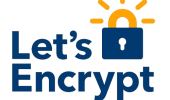Ethereum: What Software/Hardware Is Needed to Mine FPGA
As the popularity of cryptocurrencies like Bitcoin continues to grow, so does the demand for reliable and efficient mining hardware. One option that has caught the attention of many investors is the use of a Field-Programmable Gate Array (FPGA) as a mining rig. In this article, we will explore what software and hardware is needed to mine with an FPGA, and provide recommendations for small-scale miners who want to avoid the noise and heat associated with traditional processor-based mining.
What is an FPGA?
Before diving into the details of mining Ethereum with an FPGA, let’s quickly define what a Field-Programmable Gate Array (FPGA) is. An FPGA is a type of integrated circuit (IC) that can be programmed and reprogrammed at runtime to implement digital circuits. It consists of a large number of interconnected gates that are used to perform calculations and process data.
Hardware Requirements for Ethereum Mining with FPGA
To mine Ethereum with FPGA, you will need the following hardware components:
- FPGA board: A small, single-board computer, such as a JTAG-IV or Borkowski FPGA, is ideal. These boards have a built-in microcontroller and can be programmed with various development tools.
- EEPROM: An eeprom (electrically erasable programmable memory) module is required to store the Ethereum firmware on the FPGA board. You will need an 8-bit or 16-bit EEPROM, depending on the FPGA board you choose.
- Power supply
: A low-voltage power supply (e.g. 3.3V) is required to power the FPGA board and its components.
Software Requirements for Ethereum Mining with FPGA
To mine Ethereum with an FPGA, you will need a software framework that can interact with the hardware. Here are some popular options:
- Ethereum Smart Contract Development Framework: The Ethereum Virtual Machine (EVM) provides a set of APIs that allow developers to create and deploy smart contracts on the Ethereum blockchain.
- FPGA Firmware Development Tools: There are several open source development tools available for FPGAs, such as Vivado, Xilinx ISE, and Altera’s Harmony. These tools offer a variety of features, including memory management, arithmetic operations, and data processing.
Recommended FPGA Board
Due to its small size, low power consumption, and ease of use, we recommend the
JTAG-IV FPGA board as a starting point for Ethereum mining with an FPGA. The JTAG-IV features:
- 16KB flash memory
- 4KB RAM
- 32KB EEPROM (2 x 16KB)
- Integrated GPIO pins
This board is available from several online retailers, including Adafruit and SparkFun.
Software Recommendations
For Ethereum mining with an FPGA, we recommend using a software framework that provides a simple and efficient way to interact with the hardware. Here are some popular options:
- Ethereum-STM32: This framework allows you to use an STM32 microcontroller with a JTAG-IV board, providing access to the EEPROM and other peripherals.
- FPGA-Framework: This framework provides a set of APIs that allow you to write custom firmware for your FPGA board.
Conclusion
Mining Ethereum with an FPGA can be a fun and rewarding experience, but it requires careful planning and consideration. By choosing the right hardware components, software frameworks, and tools, you can build a small-scale mining rig that is both efficient and environmentally friendly. The JTAG-IV FPGA board and the EVM Smart Contract Development Framework are great starting points for mining Ethereum with an FPGA.
Tips and Considerations
- Power Consumption: FPGAs generally consume less power than traditional processors, but still require a reliable power source.
- Heat Generation: FPGAs can generate heat due to their high clock speeds and processing activity.



